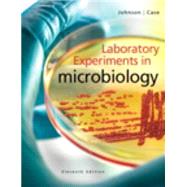For general microbiology laboratory courses.
Containing 57 thoroughly class-tested and easily customizable exercises, Laboratory Experiments in Microbiology, Eleventh Edition, provides engaging labs with instruction on performing basic microbiology techniques and applications for undergraduate students in diverse areas, including the biological sciences, allied health sciences, agriculture, environmental science, nutrition, pharmacy, and various pre-professional programs.
The perfect companion to Tortora/Funke/Case’s Microbiology: An Introduction or any introductory microbiology text, the Eleventh Edition features fourteen new Part-opening Case Studiesthat introduce students to a real world scenario or health-oriented case that connects the lab exercises to an engaging, familiar context. Updates to the new ASM BSL-2 safety lab protocol enhance flexibility and customization options for the instructor. MasteringMicrobiology’s newly updated prelab quizzes along with MicroLab Tutors and Lab Technique Videos ensure students arrive prepared for each lab and provide additional review opportunities.








